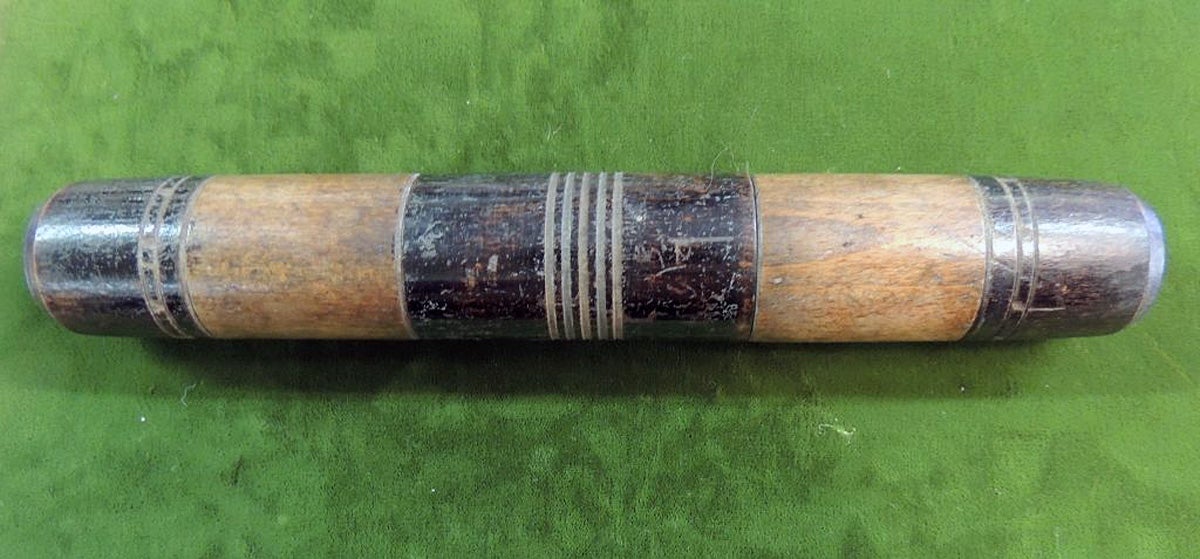Linotype operator’s ‘treen’ tube holds more than pencils
Published 6:56 pm Friday, February 8, 2019

- Jerry Sampson is owner of J. Sampson Antiques, Books and Appraisals on Main Street in Harrodsburg. He has been an accredited senior appraiser (ASA) in the American Society of Appraisers since 2009. To request an appraisal, send clear digital photos, detailed descriptions, measurements and condition to jsampsonantiques@bellsouth.net. Only one item per person. Items will be selected on an individual basis and may or may not appear in print. No coins, money, stamps, weapons or sports memorabilia will be considered. No emailed photos or information will be kept. Information discussed in Personal Effects is not intended to be a substitute for an in-person appraisal of an item. Exact valuing can come only from actual viewing. Jerry Sampson, J. Sampson Antiques, Books and Appraisals, The Advocate-Messenger and its staff cannot be held responsible for misinformation or incorrect estimates. These featured appraisals are intended for entertainment purposes only and are not valid for insurance coverage or estate settlement.
By JERRY SAMPSON
Personal Effects
Question: Dear Jerry, this item belonged to my grandfather born in 1876. I am not sure what the wooden cylinder was used for. He was a linotype operator for years and also loved writing ditties about others. Could this have carried his pens or pencils?
Answer: I believe that you do have a wooden pen or pencil case. If it had been much smaller, I would have called it a needle holder. There was a time that everything was packed or stored in wooden boxes.
Sadly, wood is heavier than paper and the wooden pieces gave way to modern packaging. There was a time that pens and even nice pencils were valuable. Not so much on a dollar level, but as a means of communication. And old dip pens and pencils were messy and sharp. A small wooden tube kept them safe, dry and ready to use.
Collectors love wooden items. The term antiques dealers use is called “treen” for small, wooden domestic wares, usually antiques. There is such a grounding and tactile feel to wooden items. This wooden tube, or case, appeals to collectors who like treen and also to collectors of pens and pencils.
It’s hard to tell, but I think it’s maple wood with a dark decorative stain and machine turned decorations.
It’s great that you still have the original top. Over time they can become misplaced. Needless to say, that ruins them on many fronts. I wager that your pen holder dates to the early 1900s or maybe a little earlier. There is a soft patina that only decades of use can provide. This only adds to its appeal and value.
Do nothing to it. You’d be surprised at how many people want to refinish and “slick up” a piece that’s 100 years old. I suggest a light coat of clear paste wax to give it some protection and luster. Nothing more.
If I had this piece in my store I’d not hesitate to price it for about $30. But I know its sentimentality means so much more to you.
A side note: For those who don’t know, a linotype operator or setter, was a person who spent hours setting letters, words and illustrations by hand in printing frames, or blocks to be printed into newspapers or some form or advertising. You know those printers trays that you put miniatures in and hang on the wall? This is what those letters were stored in. It is rarely used, if ever, in this modern age of computers. Thanks for a great question.





